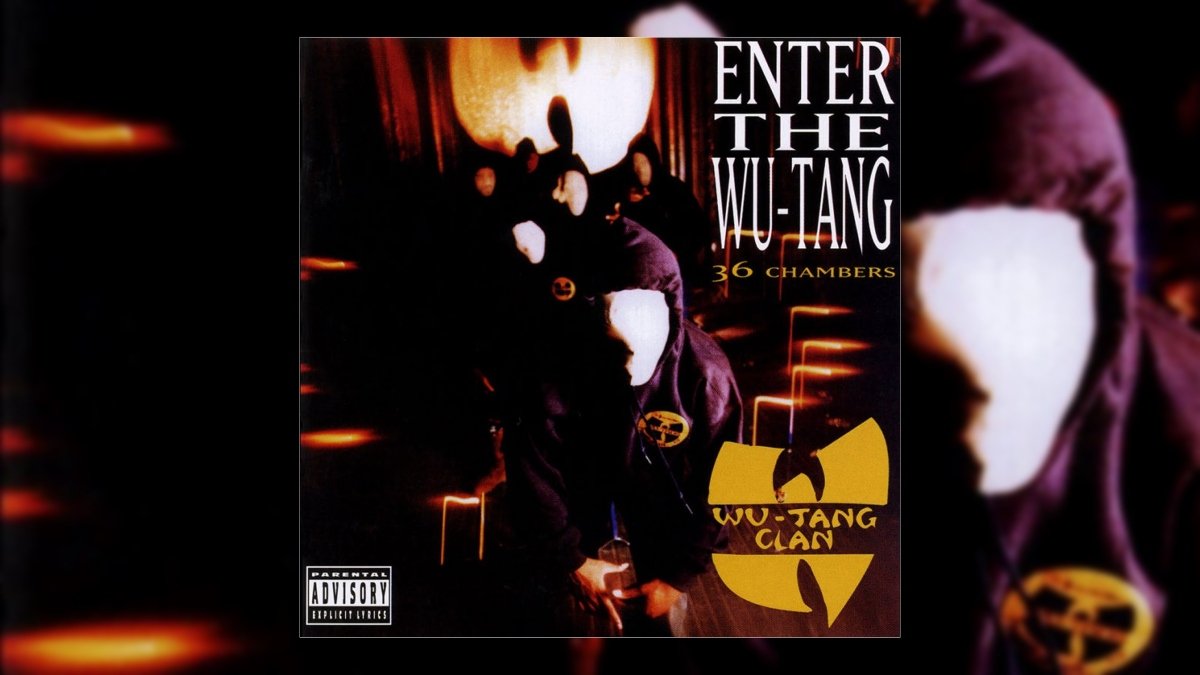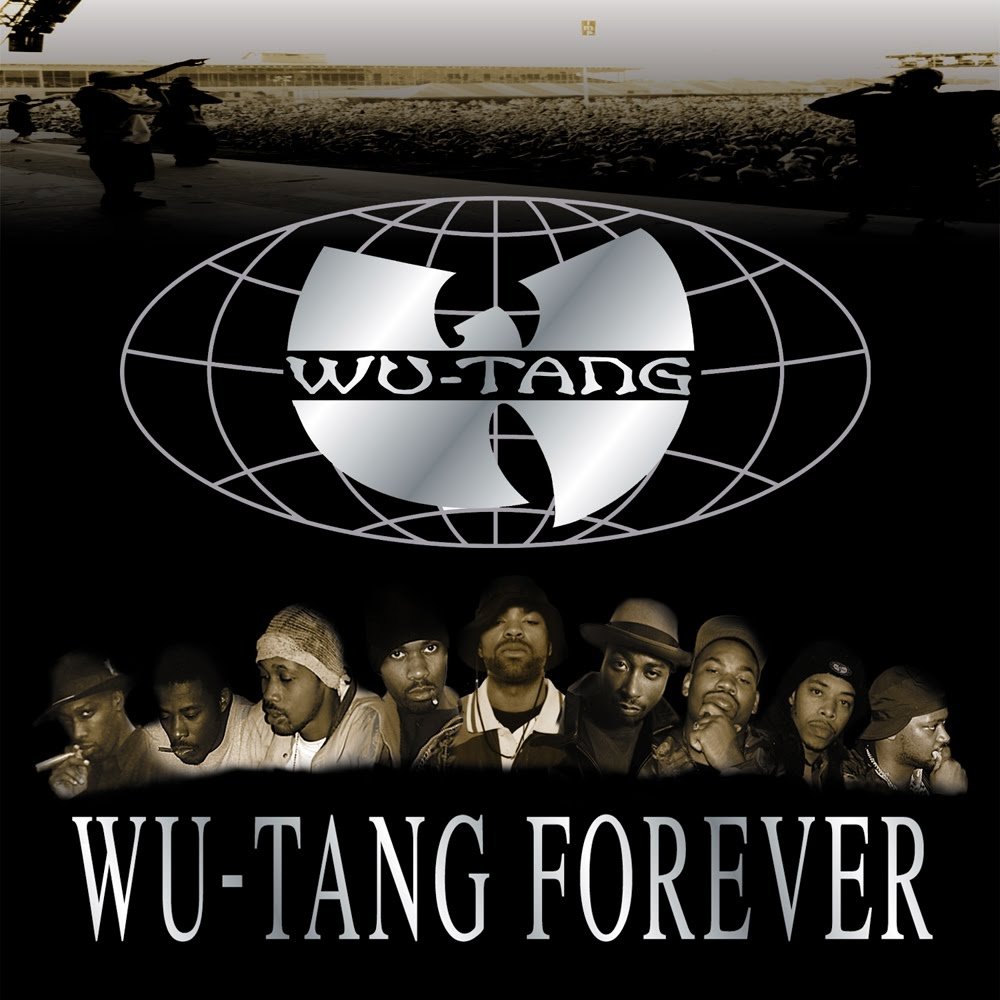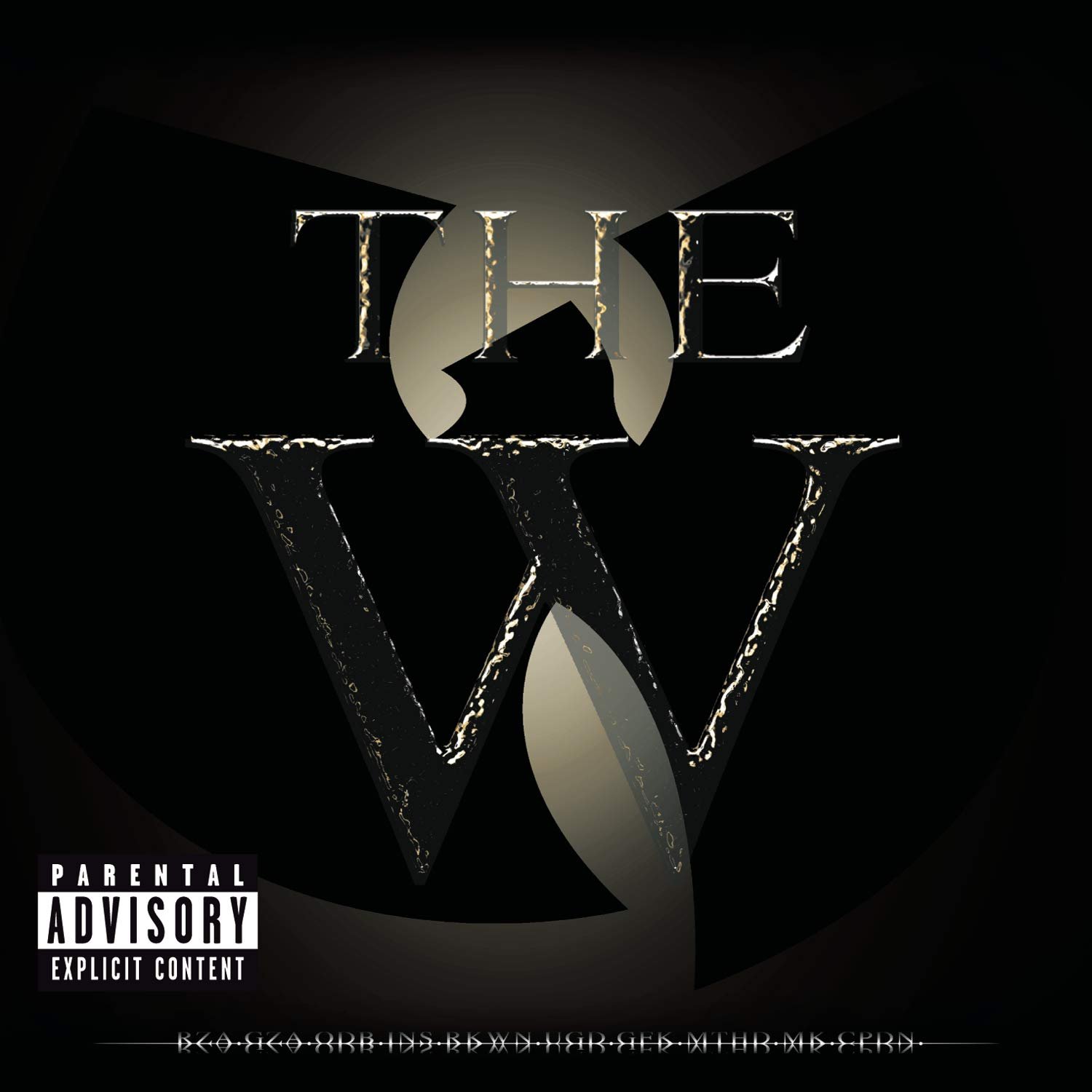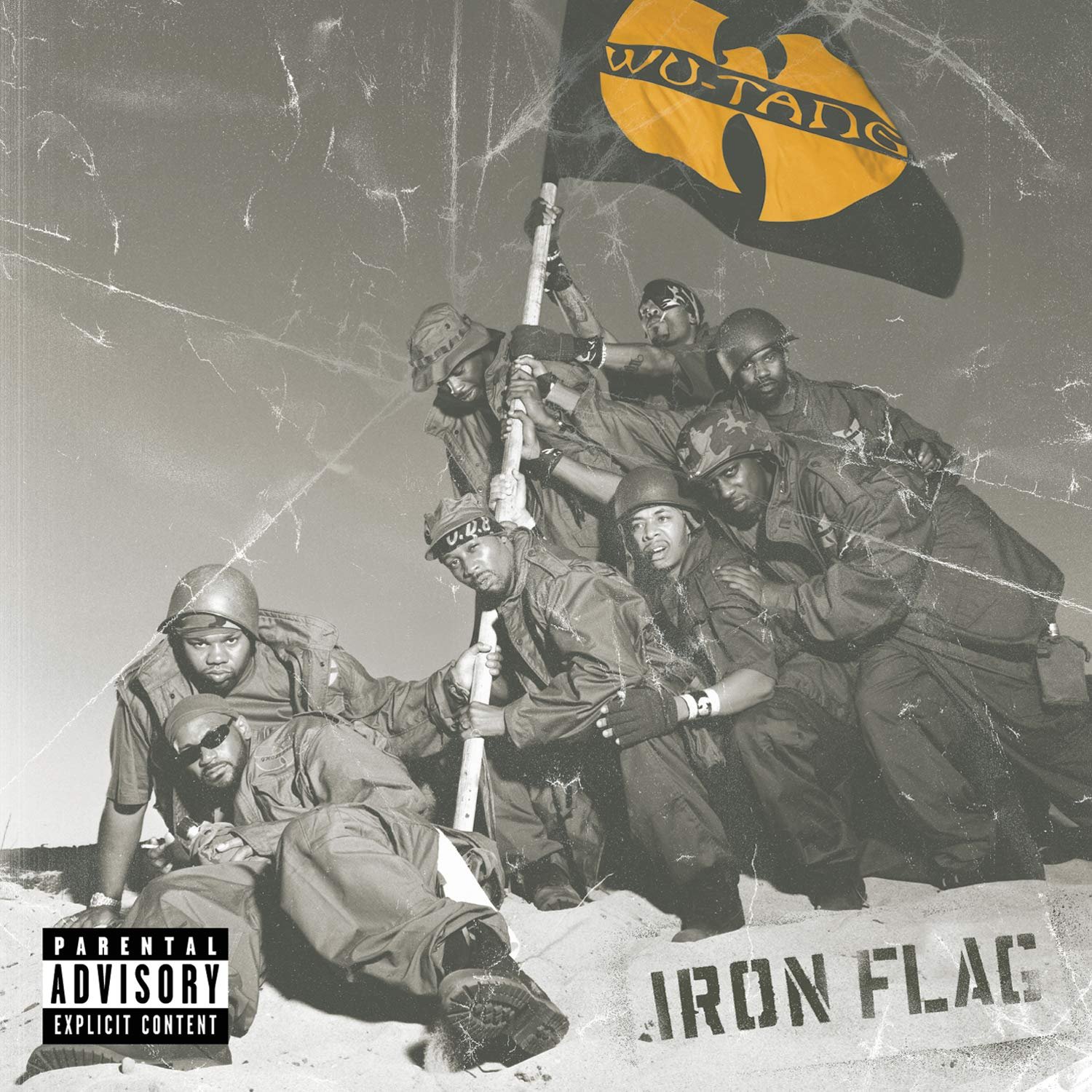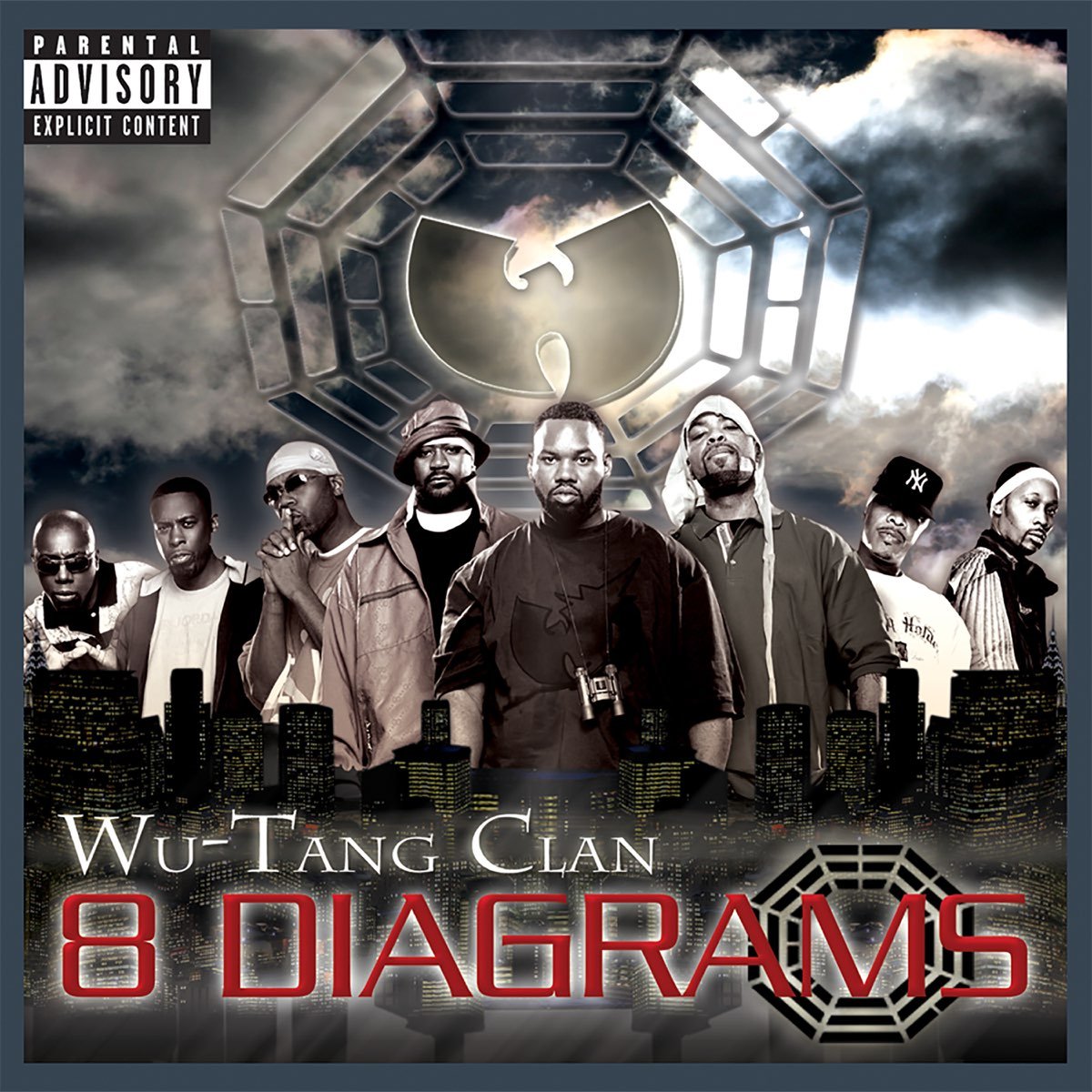Happy 30th Anniversary to Wu-Tang Clan’s debut album Enter the Wu-Tang (36 Chambers), originally released November 9, 1993.
The Wu-Tang Clan descended on the world of music like the proverbial swarm of killer bees. Or an invading horde of black-hooded, Timberland-footed ninjas. With their debut album, Enter the Wu-Tang (36 Chambers), released 30 years ago, they struck fast, hard and without mercy. Hip-Hop heads didn’t know what was coming until it was too late.
On one of the album’s skits, over low growling buzz and deep bassline (aptly sampled from New Birth’s “Honey Bee”), Robert “RZA” Diggs makes his presence known by repeatedly chanting, “WU-TANG KILLER BEES! WE ON A SWARM!” He lists off the crew’s core members, and then starts name-checking their affiliates, shouting out an army’s worth of Wu-Tang soldiers. He bellows, “Killa Bees all over your fucking planet! Thirty-six chambers of death! Three hundred and sixty degrees of perfected styles! Chopping off your motherfucking dome!” It drives things home: the Wu is coming through, and the outcome? Critical.
Wu-Tang Clan’s background is pretty well-known by now. It’s been documented in books, chronicled in a documentary series, and even depicted over three seasons of a television series on Hulu. The Clan are a group of anywhere between eight to ten highly skilled emcees, most born and raised in the rougher parts of Staten Island, New York.
They were spearheaded by RZA and Gary “GZA” Grice, both of whom were industry vets and victims of lousy record deals from Tommy Boy and Cold Chillin’, respectively. They gathered up the most skilled crewmembers and recorded and released the “Protect Ya Neck” 12” independently. Soon thereafter, Wu-Tang as a group signed with Loud/RCA records, but had a provision placed into their contract allowing each member of the group the freedom to negotiate their own record deal with whomever they saw fit.
Back then, the Wu was comprised of RZA, GZA, Clifford “Method Man” Smith, Corey “Raekwon” Woods, Dennis “Ghostface Killah” Coles, Russell “Ol’ Dirty Bastard” Jones, Jason “Inspectah Deck/Rebel INS” Hunter, and Lamont “U-God” Hawkins. Elgin “Masta Killa” Turner appeared on Enter the Wu-Tang but wasn’t a full-fledged member yet and Duane “Cappadonna” Hill, considered one of the best rappers in Staten Island growing up, was incarcerated when the album was recorded.
Each Clan member had their own style and identity: you could never confuse one for another on the mic. And all of them were dope in their own right. Yet, even though each member was unique stylistically, they all perfectly coalesced around the rugged soundscapes to create something revolutionary.
Wu-Tang Clan was the music of the streets. It was the soundtrack to blighted street corners on bleak days and dark nights. Furthermore, it was infused with the essence of classic Kung Fu flicks from the ’70s and ’80s. All of Wu-Tang’s members were obsessed with the low budget, poorly dubbed movies of The Shaw Brothers, Gordon Liu, and others. As a result, the Clan’s rhymes were steeped in their slang and peppered with references to these films. Staten Island became Shaolin, and the Clan adopted the name after one of the grimiest crews featured in these pictures.
Watch the Official Videos:
The musical side of Wu-Tang was equally important to its success. Enter the Wu-Tang was produced entirely by the RZA, who achieved a trademark dusty sound. He used samples that draw heavily from labels like Stax Records, music and soundbites from the aforementioned Kung Fu flicks.
“Protect Ya Neck” was the group’s opening salvo, a dark and sparse introduction to the group’s lyrical and musical stylings and a direct reminder to their peers to watch themselves when the Wu is in the area. It’s the only track on the album to feature all eight of the group’s core members at the time. Over fleeting piano notes and muted wails, each emcee delivers a potent 12 bars, giving the audience a relatively brief taste of what each member of the crew had to offer. Stand-out performances abound, whether it’s Raekwon vowing to “blow up your project, then take all your assets,” ODB threatening to “stick pins in your head like a fucking nurse,” or GZA tearing into his former “Cold Killin’” record label for “doing artists in like Cain did Abel / Now they money's getting stuck to the gum under the table.”
Though “Protect Ya Neck” may have been people’s first entrée into the Wu-Tang Clan, the group starts Enter the Wu-Tang proper with the appropriately raucous and dirge-like “Bring the Ruckus.” Ghostface’s first line, “GHOSTFACE! Feel the blast of a hype verse!” is one of the great album opening lines in hip-hop history, but the track is really held down by standout performances from Raekwon, Inspectah Deck (always the crew’s workhorse), and GZA.
The album finds its comfort zone in its faster tempo tracks, like “Shame On a N***a,” where Method Man, ODB, and Raekwon pass the mic back and forth over the horn-filled outro from Syl Johnson’s “Different Strokes.” “Wu-Tang Clan Ain’t Nuthin’ To Fuck Wit” has become an audience favorite over the past 30 years, as RZA, Deck and Meth all contribute memorable performances. The beat is also one of RZA’s best on the project, as he expertly chops the theme to Underdog and pairs it with the drums from Biz Markie’s “Nobody Beats the Biz.”
The Clan kept things at a slower tempo for some of their singles, and in those cases it served them well. “C.R.E.A.M.,” possibly the Wu’s signature track, is built upon a piano heavy sample of The Charmels’ “As Long I’ve Got You.” According to RZA, the beat itself was first recorded in 1989, and the song went through multiple iterations before becoming the group’s biggest hit. It started off as “I’m Some Shit,” featuring RZA and Ghostface, and eventually mutated into the lyric heavy “Lifestyles of the Mega Rich” featuring Raekwon and Deck, who each originally contributed four verses to the song. Eventually, when the group went to record Enter the 36, they resurrected the track, with Rae and Deck compressing their verses, and Method Man contributing the signature hook.
“C.R.E.A.M.” is one of the greatest songs about the pursuit of financial wealth ever recorded, as it’s based in what each of the emcees had to go through in their lives in order to reach the point where they were finally realized their goals. Raekwon deservedly received The Source’s Rhyme of the Month for his verse, where he reflects on his tough upbringing. However, Deck’s verse chronicling the intricacies of street life and reflecting on how easily it can become a death trap, is one of the strongest of his career.
“Can It Be All So Simple?” serves as the first pairing of Raekwon and Ghostface on a track together, and it demonstrated how the two could bring out the best in each other. It’s a reflective track, built around the idea of the duo taking stock of where they’ve been in life and where they want to go in the future. With each of their verses, Raekwon describes the struggle of growing up in the streets of Shaolin, while Ghostface dreams about how success could change his life.
Enter the 36 does give some of the individual Clan members some time to shine. GZA, arguably the best pure lyricist in the crew, displays his expert verbal chops on “Clan In Da Front.” His debut solo album Words From The Genius (1991) did a poor job of demonstrating just how good he was, as Cold Chillin’ pushed him to make a more accessible album. With the Wu-Tang Clan, he was free to keep it as raw as he likes, and he responded accordingly.
Enjoying this article? Click/tap on the album covers to explore more about Wu-Tang Clan:
“Clan In Da Front” is the essence of hip-hop distilled, as GZA kicks two masterful verses over the classic “Synthetic Substitution” drum break and chopped piano notes from the intro of Thelonious Monk’s “Ba-Lue Bolivar Ba-Lues-Are.” Lyrically, GZA excels, moving with exacting precision on his first verse, but getting more amped as the track continues. He starts the second verse with his guns blazing, rapping, “No response while I bomb that ass / You ain’t shit, your wack-ass town had you gassed / Egos is something the Wu-Tang crush / Souped-up n****s on a stage get rushed!”
Method Man has become the best-known member of the Clan, both on the strength of his 1994 hit “All I Need” and his acting career. His success can be traced back to “Method Man,” the B-side to the major-label re-release of the “Protect Ya Neck” 12” and the album’s second single.
Despite the fact that the song was already three to four years old by the time it was released, Meth’s style and presence were unlike pretty much everything heard at the time. He possessed a gravelly, raspy voice paired with a sing-songy flow, re-interpreting Hall & Oates’ “Method of Modern Love” and the Beatles’ “Come Together,” while dropping references to Tweety Bird, Mary Poppins, panty raiders, and Tootsie Roll commercials. It’s also worth noting that, flow-wise, this song was the most accessible that Meth ever delivered. As he moved forward in his career, including throughout this album, he used a grittier, more sinister delivery.
But Enter the Wu-Tang is really at its best when many of the Clan are able to collaborate on one track. “Da Mystery of Chessboxin’,” the fourth single on the album, is an intricately constructed exercise in verbal chess. The dark and menacing track is best known for U-God’s opening eight-bar verse, and for featuring the first appearance of Clan member-in-training Masta Killa. However, it’s Deck who shines the brightest, rapping, “So if you wanna come sweating, stressing, contesting / You’ll catch a sharp sword to the midsection / Don’t talk the talk if you can't walk the walk / Phony n****s are outlined in chalk.”
“Wu-Tang: 7th Chamber” is another of the album’s extended posse tracks. The song is oft forgotten, mostly due to being over-shadowed by the “Where’s my killer tape?!!?” skit that precedes it, but it’s one of the better tracks on the project. The song appears in two different incarnations: first as a rugged head-nodder and then in remixed form as the album’s frenetic, noise-filled closer.
The track is another lyrical tour-de-force, demonstrated by Deck proclaiming that, “I leave the mic in body bags, my rap style has / The force to leave you lost like the tribe of Shabazz / Murderous material made by a madman / It’s the mic wrecker, Inspectah, bad man.” RZA contributes his strongest verse on the album, rapping, “Ruler Zig-Zag-Zig Allah jam is fatal / Quick to stick my Wu-Tang sword right through your navel / Suspenseful force being brought through my utensil / The pencil, I bring strong winds up against you.” But as always, it’s the GZA who comes the strongest, ending the song with a power-packed eight-bar verse, finishing things off with, “I came down with fat tracks that combine and interlock / Like getting smashed by a cinder block / Pow! Now it's all over / N****s seeing pink hearts, yellow moons, orange stars, and green clovers.”
During the album’s “intermission” that closes out Enter the Wu-Tang’s first half, they play a section of an interview they conducted with a New York City radio station. When the host asks the crew what the Wu-Tang’s ultimate goal is, Method Man responds “Domination, baby,” without missing a beat. It was really that simple; all Meth needed was two words. Really, he could have just used one.
Regardless, Raekwon continues to expound. “Right about now, I ain't braggin' or nothing, but, yo, the Wu got something that I know that everybody wanna hear,” he says. “’Cause I know I've been waiting to hear.”
During their creative peak, everything they said came to pass. Three decades later, even as the Clan only functions as a group to tour, the crew has a devoutly loyal following that it built with albums like Enter the Wu-Tang. Their words and music remain as powerful and sharp as the finest sword.
LISTEN:
Editor's note: this anniversary tribute was originally published in 2018 and has since been edited for accuracy and timeliness.

